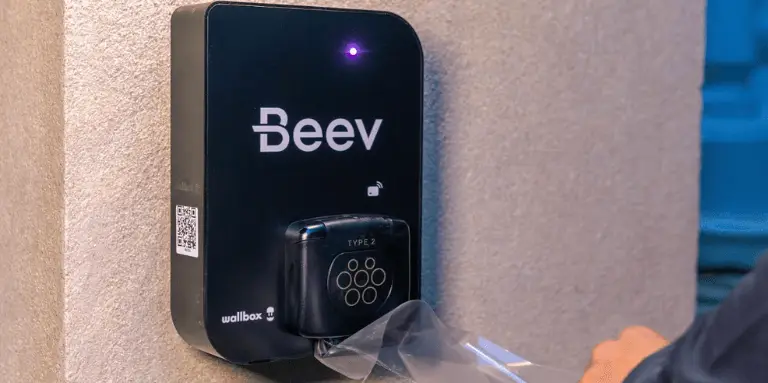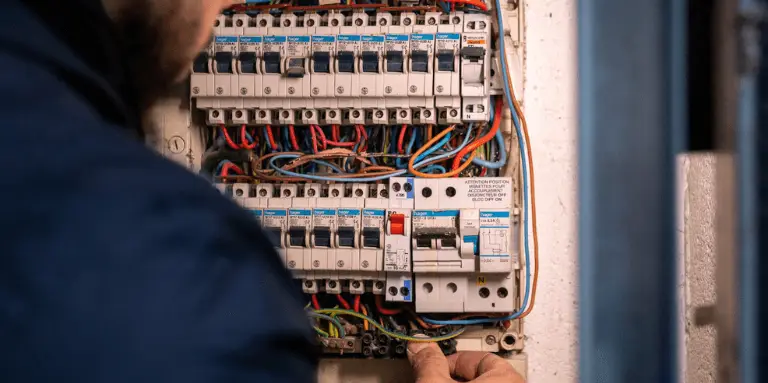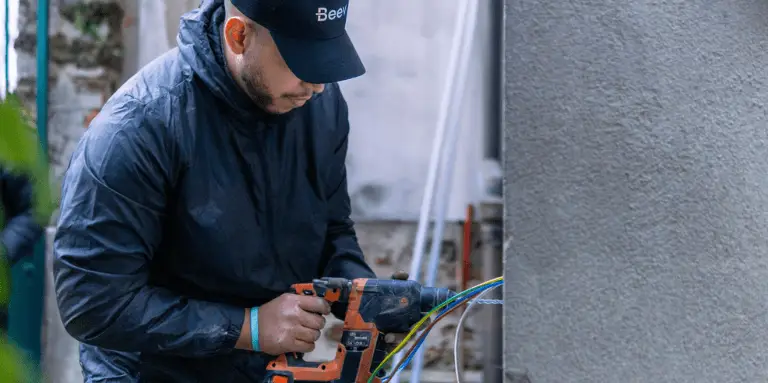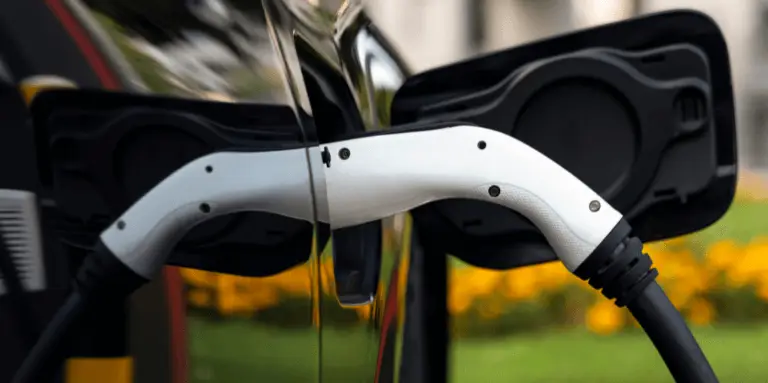Would you like to install a recharging point?
Beev can help you find the charging point and installer you need, at the best price.
Moving your charging point or buying a new charging point?
When moving house, the question of whether it's better to move your charging point or buy a new one is a key one for electric vehicle owners.
Here are a few points to help you make the best choice.
Moving your charging point
Moving a recharging point may seem like a cheap and easy solution.
However, it is important to take into account the costs and efforts required to achieve this. dismantlingthe transport and the relocation. In addition, you need to ensure that your new home is compatible with your terminal's existing infrastructure.
Nevertheless, opting for this option can give you a number of advantages:
- you don't need to reinvest in a new terminal,
- you will continue to use equipment with which you are already familiar,
- and you'll benefit from the same services as in your previous home if you've taken out a maintenance contract for your recharging solution.
To consult : Maintenance contract: is it essential for a recharging point?
On the other hand, moving house at the same time as moving your charging point has its drawbacks:
- the risk of damage during transport.
- the potential cost of dismantling and re-installation is not negligible.
It should also be noted that if you move house, the additional offers to which you have subscribed will still be effective without the need to cancel. In fact, whether you have a reload card or that you had a warranty for your terminal such as Beev CareYou can simply transfer the subscription to the new address.
You want to order your Beev recharge card ?
Thanks to our card,recharge your electric car with ease at all the charging points available in Europe.
Buying a new charging point
Buying a new charging point when you move house can offer significant benefits. The new charging points available on the market can offer more advanced technologies and faster installation.
This allows :
- access to financial assistance for purchase and installation,
- and the opportunity to acquire a more modern and efficient terminal.
Nevertheless, a number of drawbacks have been identified, including
- a higher initial investment,
- and the need to familiarise yourself with new equipment.
What's more, if you choose not to relocate your charging point because of a certain installation complexity and/or a lower profitabilityThis will enable you to promote your property in a significant way from a property point of view.
In fact, the investment you make in this charging point will now contribute to the overall value of your home.
In other words, you will have a an additional selling point for your propertypotentially increasing its perceived value:
- the difficulty of recharging at public charging points,
Read more :
→ The problem of public charging points in France
→ Charging station: the new QR code scam
- a ban on the sale of new electric vehicles from 2035,
- of an increasingly important ecological transition in recent years,
- and the growing appeal of electromobility to motorists in France.
To consult : Charging stations: what's the current state of deployment?
This This advantage is particularly relevant in condominiumswhere installing charging points is a much longer process.
All in all, the decision between moving your charging point or buying a new one depends on several factorsincluding the costs, technical compatibility and benefits of new technologies.
If your current terminal is new and the cost of moving is reasonable, moving it may be a good option. However, if you want to take advantage of technological advances or benefit from subsidies, buying a new terminal could be more cost-effective.
To do this, you need to find out beforehand which is the most economical option for you. To do this, our experts Beev are available from Monday to Friday, 9am to 7pm to help you make the right choice.
your charging point
How much can I expect to pay to move my charging point?
When you move house, 2 IRVE technicians are often needed. The first, near the old home, will dismantle the charging point, while the second, near the new home, will reinstall it.
These 2 separate operations are invoiced according to the complexity of the work to be carried out and the precautions required.
You therefore need to allow for approximately 300 excluding VAT for the removal of the bollard and between 300 and €920 excluding VAT for reinstallation in the new home, as all the settings have to be redone.
Note that these costs may increase in the event of particular technical difficulties, such as :
- a obsolete electricity meter to replace,
- a greater distance between the bollard and the meter than ever before,
- requiring additional wiring
- and pairing options to be reprogrammed in a more complex way.
Finally, if the recharging point is not under a maintenance contract with a biennial visitthe authorised technician may refuse to install it. This is because the technician may not wish to guarantee equipment for which he is unaware of the initial installation conditions and previous use.
As a reminder, if you wish to acquire a single-phase charging point (i.e. a terminal rating of 7 kW), the price you should expect to pay is between 300 and €600 before tax depending on the model and options chosen.
For the three-phase charging points (i.e. a power of 11 or 22 kW), the price will be between 600 and €900 before tax.
Read more :
Moving your charging point: key points to know
When the time comes to move your charging point, there are several crucial aspects to consider to ensure a smooth and efficient transition.
This section explores in detail the essential steps and best practices to follow to move your charging point safely and compliantly.
Who do I talk to about uninstalling and installing my charging point?
Uninstalling and installing a charging point requires the intervention of a qualified professional, either a IRVE qualified electrician. In fact, beyond simply removing the equipment, it is crucial to ensure that the safety standards are respected and the the home's electricity network is not disrupted. At the same time, you can purchase a charging point with load-shedding system to minimise risks.
N.B.: Since the decree of 12 January 2017, the installation of a recharging infrastructure of 3.7 kW or more must be carried out by an IRVE (Infrastructure de Recharge pour Véhicule Electrique) certified professional who has undergone specific training.
It is therefore strongly advised not to attempt to dismantle the bollard yourself without the appropriate expertise, as this could compromise the safety of the installation.
Calling in this professional can prevent risks:
- fires,
- overheating,
- and other damage caused by incorrect installation.



You'll also be eligible for the various grants available for installing a charging point, and your insurance will cover you in the event of an accident. The reason? Using a qualified technician is a legal requirement imposed by the State to guarantee compliance with the standards in force (in particular the NF 15-100 standard) and ensure the sustainability of the private network deployed.
To consult : Aid for the installation of charging points in 2024
To make sure you choose the right installer, it is crucial to request several quotes via an online comparator. The reason for this is that the cost of installing a charging point varies from company to company, and price variations can be considerable.
Read more : How can I find the best charging point quote?
Can I benefit from aid for installing a recharging point at my new home if I have to reinstall my charging point?
If you have already benefited from aid to install a charging point and are considering doing so again for your new home, this approach is entirely feasible.
The support available will be similar to that which you have already received, although it may vary depending on the type of accommodation you are moving into.
As a result, you can benefit from various government grants and subsidies, such as :
- the VAT at the reduced rate of 5.5 %
→ for all individuals wishing to purchase and install a recharging point
- a tax credit for electric charging points (CIBRE) of up to 500 €
→ For a maximum of 75 % of the expenditure incurred, i.e. a ceiling of €500 per controllable terminal. This tax scheme is in force until 31 December 2025.
- and local and regional subsidies
Worth noting : You will need to meet a number of eligibility criteria to qualify for these various forms of assistance.
For condominium residents, you will have access to the ADVENIR bonus is also available for both collective and individual installations (right to take).
I live in a condominium: what steps do I need to take?
In France, homeowners and tenants benefit from the right to takeThis will enable them to install a charging point in their condominium at their own expense.
Read more : Right to take: put the odds in your favour
This right in question authorises any resident of a condominium building to installat its own expense. charging point with a maximum output of 22 kW on a condominium parking space.
Since 1 January 2021, a decree issued under the LOM law has extended this right to all co-ownership occupants, regardless of their status.
To exercise this right, the owners must inform the syndicate by registered letter with acknowledgement of receipt. As for tenantsthey must notify the owner, giving details of the work planned who will then take the necessary steps with the syndicate to submit the request to the general meeting.
Le syndicat des copropriétaires (condominium owners' association) cannot oppose the installation of charging points in the condominium.provided that the project complies with current standards. Requests that appear on the agenda of the next general meeting do not require a vote if they are the result of an individual initiative by an occupant.
However, only There are 3 legal grounds for refusing installation :
- Proven technical impossibility of the project,
- Existing recharging facilities already meet needs,
- An installation project already underway or planned within a reasonable timeframe.
It is therefore advisable to make a request for installation well in advance if you are moving into a condominium, so that you can get your own terminal quickly.

Where is the best place to set up my charging point?
The recharging point must be installed or reinstalled in a easily accessible location. It has doesn't necessarily have to be indoors because the majority of models can also be installed outdoors as they are waterproof and resistant. However, it is preferable to prefer an enclosed and covered location to protect it from the elements. This way, your bollard will be protected from rain or snow.
What's more, having a charging point inside a garage means you can keep your vehicle out of harm's way while it's being charged, as the High heat is the main enemy of your battery.
Read more : Preconditioning an electric vehicle battery: what does it involve?
It is also relevant to find out where the socket cover is located of your electric vehicle. It is more practical to place the terminal on the side of this hatch. If this isn't possible, don't worry: there are charging cables up to 10 metres long.
In any case, the closer the charging point is installed to the electrical panel, the less complex the work will be, which can reduce the cost of the estimate. If the charging point is installed on the wall of the house, you can save on the cost of supplying and installing a pedestal.
Mobile charging point: a good option?
When the installation of the fixed charging point takes time, particularly in the case of condominiums where approval by a general meeting is required, and the move could not be anticipated, the mobile charging point is an ideal alternative solution.
This device, a small box, can be installed both indoors and outdoors, and does not require any special installation. no special authorisation or installation constraints. All you have to do is connect the box to the home's electricity supplyMake sure the meter is powerful enough to support the system's operation. When not in use, the nomadic box can be stored in the vehicle, thus remaining accessible to the public. easily accessible when needed.
N.B.A mobile charging point plugs into a type 2 power socket and uses a special adapter.
This nomadic recharging solution is therefore an alternative for drivers of electric vehicles who do not have a charging point in a private garage or a shared-ownership box.
Finally, this mobile charging point is much less expensive than a conventional recharging solution, which means substantial savings, especially for people who move house frequently.
Conclusion
Moving with a recharging point requires a special meticulous planning and a knowledge of the steps to follow. By taking into account the technical and practical aspects, you can ensure a smooth transition so that you can continue to enjoy electric mobility in your new home. Don't forget to consult professionals about relocating your installation, and to check for local subsidies that could ease the cost.
Moving your charging point is an opportunity to optimise your installation and potentially adopt new, more efficient technologies. To find out more about charging points, feel free to explore our other blog posts. Together, we can make every journey a step towards a greener, more connected future.
If you would like to find out more about the tax credit for in-car charging points 2024For more information, see our article on this subject.
You would like toto electric?
Beev offers multi-brand 100% electric vehicles at the best prices, as well as recharging solutions.
































